By Nina Karnikowski
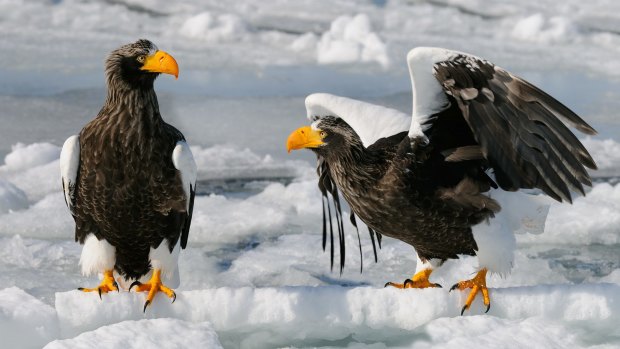
Steller's sea eagles on the drifting ice at Nemuro Strait near Rausu on Hokkaido, Japan.Credit: iStock
I am not a birdwatcher. No judgment, but I have always thought it a bit of an odd way to pass your time. Waiting for hours in the wilderness to catch glimpses of avian life? Flying across the world to see a rare bird, which may have flitted off by the time you arrive? I've just never really understood it.
It's a bit ironic, then, that I have arrived on the northern Japanese island of Hokkaido at the height of its winter birding season. In March and April each year, birders travel the world over to add Hokkaido's iconic residents – especially the Big Three of the red-crowned crane, Steller's sea eagle and Blakiston's fish owl – to their list of sightings.
I, however, am here not for our feathered friends, but to hike across the eastern edge of the island with tour company Walk Japan. And yet, on day one, I find myself inadvertently ticking off my first of the Big Three.
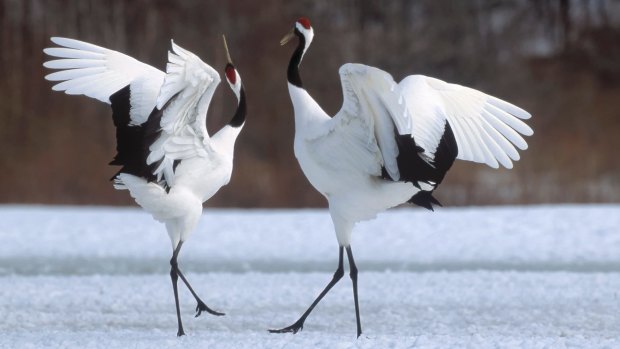
The red-crowned crane.Credit: iStock
Arriving on Kushiro Mire, Japan's largest remaining marshland, we're greeted by dozens of red-crowned cranes prancing about in the protected area that has helped lift their numbers to 900 today, from near extinction in the 1920s. As we observe them bowing their red crowns and plumping their elegant white bodies, the avian paparazzi crouch beside us in the snow, their ultra-long lenses pointed like sniper guns at a target. As I watch them, I wonder what it is that drives them to pursue this bizarre hobby. Sure, these rare birds are mesmerising, but only for about 10 minutes. These guys look like they've been here for hours, waiting in minus 10 degree temperatures … for what, exactly? To get the perfect shot, when they can already find thousands clogging the internet? Or maybe these photographs are the birder's version of a hunter's carcase? I don't really get it.
What I do get, however, is that these cranes are out of the ordinary. The little brown duck, that our guide is trying to get us interested in as we canoe down the Arekinai River later in the day, is not. As we drift down the narrow channel with a numbered sheet of illustrated birds on our laps, our guide excitedly whispers numbers as he spots the species on the sheet. It's like bird bingo, and it's about as exciting as it sounds. Until the Steller's sea eagle shows up, that is. The most powerful and aggressive eagle in the world, and the second of the Big Three, is perched in a snow-dusted tree just 100 metres away.
Winter brings 2000 Steller's sea eagles – almost a third of the species' population – to Hokkaido each year. With a wingspan of up to two metres and weighing up to 10 kilograms, the Steller's far outsizes North America's bald eagle. But its stunning appearance, with its tangerine beak and talons contrasted against plush black and white feathers, is by far its most impressive feature. It's enough to make us finally reach for our cameras.
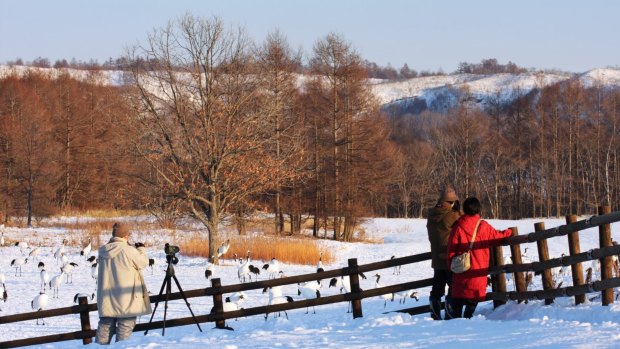
Birdwatchers photograph a flock of red-crowned cranes in Kushiro Shitsugen National Park, Hokkaido. Credit: iStock
Soon the eagle disappears behind us, but as we continue paddling under the sharp blue sky I realise we're now more alert, and that the birdwatching has added extra excitement to our canoeing trip.
The next evening we arrive at our hotel to find the lobby filled with birders. They are squatting by the floor-to-ceiling windows, binoculars slung around their necks, long-lensed cameras pointed out at the snowy riverbank. "They're waiting for the Blakiston's fish owl," whispers our guide. To our blank stare, he adds, "It's the biggest owl in the world, and one of the most endangered." It's also the third of the Big Three, and occasionally comes to feed in the small pond in front of these windows.
Later, as we're finishing our elaborate dinner, a waitress scurries in and announces that the owl has arrived. I follow our group to the lobby, wishing I could just stay sipping my sake. But then I see him: huge, plump and perched on the edge of the pond, his intensely golden eyes staring into the water, his wild ear tufts alert. Camera shutters clatter around me as he flaps his vast wings and dives into the pond, emerging triumphant with a fish dangling from his beak. He is impossibly majestic and completely mesmerising, and I'm lost in his world for a little while.
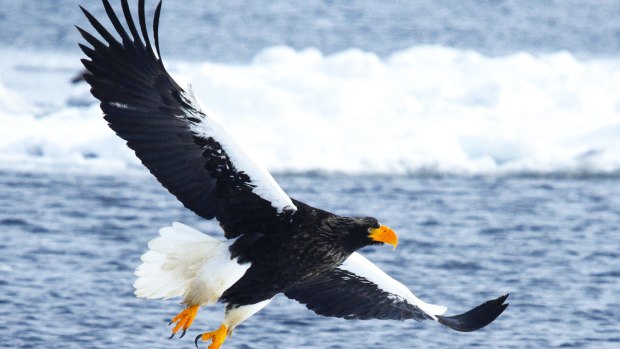
The impressive Steller's sea eagle is the most powerful eagle in the world.Credit: iStock
Once the owl has flapped away and his spell has been broken, I chat with an American birder who travels the world to see rare species. But why? I ask him. Sure, they're beautiful, but there must be something else? He rattles off a couple of reasons: wanting to capture a bird in a position he's never seen it in before, sighting a rare species in the flesh. "Sometimes though I think birding isn't about seeing the birds at all, but about the cultivation of patience," he says.
Sitting there, looking out at the snow gently falling into the river, I think I'm finally starting to understand. Maybe, more than simply categorising species or having an excuse to travel, birdwatching is a lesson in finding stillness. And, perhaps most importantly, about capturing a little bit of beauty in the world.
TRIP NOTES
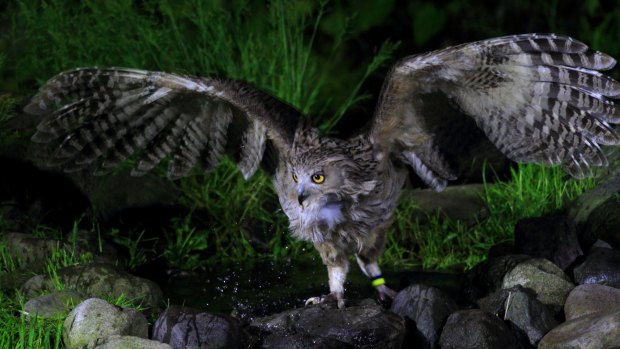
Blakiston's fish owl is the largest living species of owl.Credit: iStock
MORE
FLY
ANA flies daily from Sydney and Melbourne to Tokyo. A 90-minute connecting flight gets you to Hokkaido. See ana.co.jp.
TOUR
Walk Japan specialises in expert-led small group tours across Japan. The fully guided eight-day Hokkaido Snow Tour, exploring eastern Hokkaido in winter, starts from $A5707 a person. See walkjapan.com.
Nina Karnikowski travelled courtesy of Walk Japan.
Sign up for the Traveller Deals newsletter
Get exclusive travel deals delivered straight to your inbox. Sign up now.